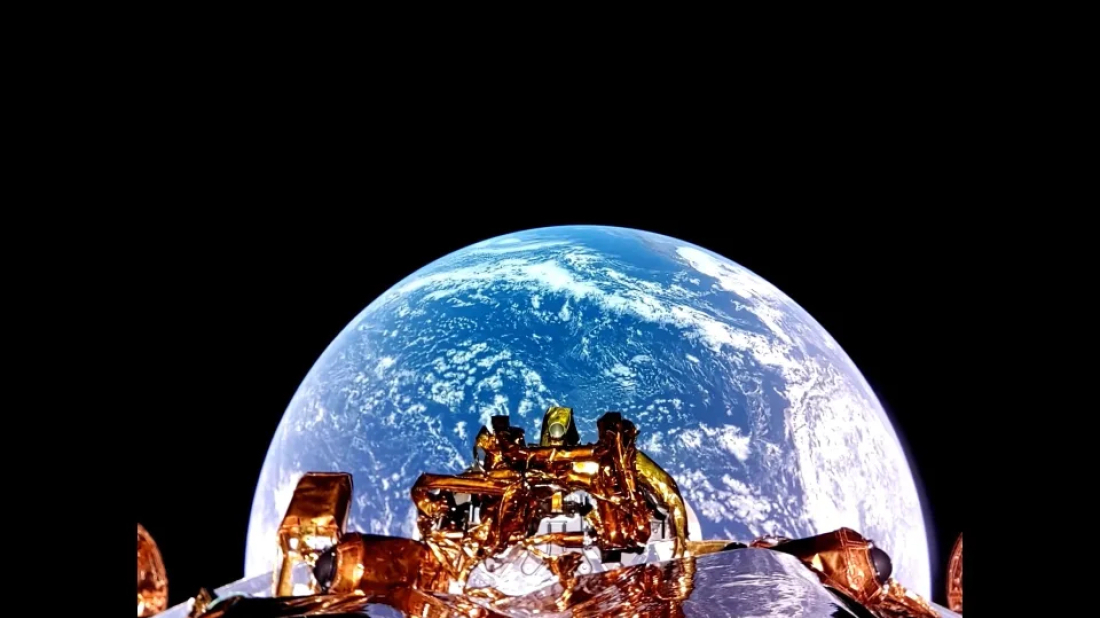CIA review finds flaws in 2016 Russia report but upholds finding Putin backed Trump
A CIA review has identified procedural flaws in a 2016 assessment that Russia sought to help Donald Trump win the U.S. presidency, but it did not chal...

The year 2025 is shaping up to be a pivotal period for commercial lunar exploration, with half a dozen missions slated to launch over the coming months. These ventures, led by private companies under NASA’s Commercial Lunar Payload Services (CLPS) program, mark a significant expansion of commercial
A Busy Start to the Year
The first commercial mission of 2025 launched on January 15, when Firefly Aerospace’s Blue Ghost Mission 1 lifted off aboard a SpaceX Falcon 9 rocket. The lander, carrying ten science payloads for NASA and other partners, is expected to touch down on March 2 in Mare Crisium. It will investigate heat flow from the lunar interior, measure magnetic and electric fields, and capture X-ray images of Earth's magnetosphere.
The same Falcon 9 rocket also deployed the Resilience lander from Japan’s ispace. Resilience is taking a low-energy trajectory and is expected to arrive at Mare Frigoris in late May or June. It carries a micro rover, Tenacious, equipped with cameras, a shovel, and a Swedish-designed miniature house known as the Moonhouse. Additional payloads include a deep space radiation probe and a food production experiment.
Intuitive Machines Expands Lunar Presence
Following its historic 2024 Odysseus moon landing, Intuitive Machines is preparing for its second CLPS mission, IM-2 Athena, set to launch by late February. Athena will land at the Moon’s south pole and deploy a drill and mass spectrometer for NASA’s Polar Resources Ice Mining Experiment-1 (PRIME-1), designed to assess lunar water resources. The mission will also carry Lunar Trailblazer, a small orbiter studying lunar water distribution, and an Intuitive Machines Micro-Nova Hopper, a propulsive drone that will hop across the surface.
Blue Origin’s Lunar Ambitions
Blue Origin’s Blue Moon Mark 1 lander could launch as early as spring or summer, though delays remain possible. The company plans to deliver NASA’s Stereo Cameras for Lunar Plume Surface Studies (SCALPSS) to the lunar south pole. The data collected will inform future crewed Artemis missions. Meanwhile, Pathfinder, Blue Origin’s first demonstration lunar mission, could launch by March 2025.
Future Missions on the Horizon
Astrobotic, whose Peregrine lander suffered a failed mission in early 2024, will make another attempt later this year. Griffin Mission 1, slated for the fall, was initially set to carry NASA’s VIPER rover, but the project was canceled due to cost concerns. Instead, the mission will include a CubeRover and a laser retroreflector array for location pinpointing.
Intuitive Machines is planning a third mission, IM-3, for late 2025 or early 2026. The mission will target Reiner Gamma, a lunar swirl with a unique mini-magnetosphere, and deploy multiple rovers, including the Mobile Autonomous Prospecting Platform (MAPP) and CADRE, a trio of autonomous robots.
No Humans on the Moon—Yet
Despite the surge in commercial missions, human exploration of the Moon remains on hold. NASA recently delayed its Artemis II mission, the first crewed flight around the Moon, to April 2026. Artemis III, which will see astronauts walk on the lunar surface, is now scheduled for mid-2027.
With numerous commercial ventures in the pipeline, 2025 is poised to be a defining year for lunar exploration. Whether all planned missions meet their timelines remains to be seen, but the race to establish a sustainable human presence on the Moon is well underway.
The U.S. economy faces a 40% risk of recession in the second half of 2025, JP Morgan analysts said on Wednesday, citing rising tariffs and stagflation concerns.
A magnitude 5.5 earthquake struck off Japan’s Tokara Islands on Wednesday, with no tsunami warning issued but residents advised to remain vigilant.
China has ramped up efforts to protect communities impacted by flood control measures, introducing stronger compensation policies and direct aid from the central government.
The European Commission is set to propose allowing carbon credits from other countries to count towards the EU’s 2040 climate target, according to a leaked internal document.
Severe rain in Venezuela has caused rivers to overflow and triggered landslides, sweeping away homes and collapsing a highway bridge, with five states affected and no casualties reported so far.
A multimodal cargo airport in Azerbaijan’s Alat Free Economic Zone (FEZ) is scheduled for commissioning in Q1 2027, the deputy head of the FEZ governing body Ismail Manafov announced.
Italy plans to grant approximately 500,000 work visas to non-EU nationals between 2026 and 2028, as announced in a cabinet statement. The initiative aims to address labor shortages by expanding legal immigration pathways
Oil prices plunged more than 12% last week, ending a three-week rally, with experts expecting them to stabilize around $60 if the fragile ceasefire between Israel and Iran holds.
The Asian Infrastructure Investment Bank (AIIB) and the Arab Fund have signed a memorandum of understanding (MoU) to formalize a strategic partnership focused on advancing sustainable infrastructure in shared priority regions.
Tesla’s new car registrations plunged sharply in June, dropping 64.4% in Sweden and 61.6% in Denmark compared to last year, highlighting growing challenges for the U.S. electric vehicle maker in these Nordic markets.
You can download the AnewZ application from Play Store and the App Store.

What is your opinion on this topic?
Leave the first comment